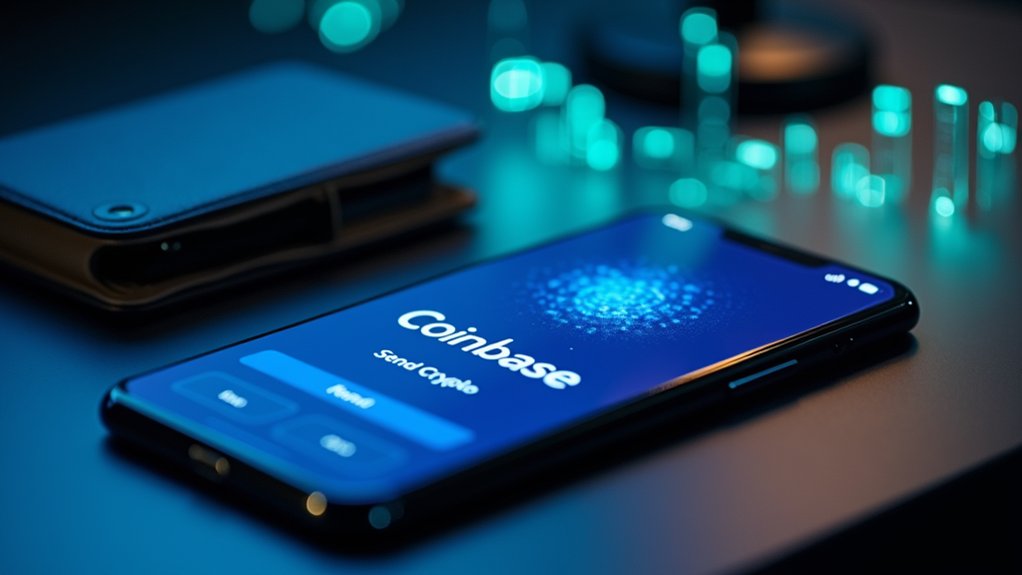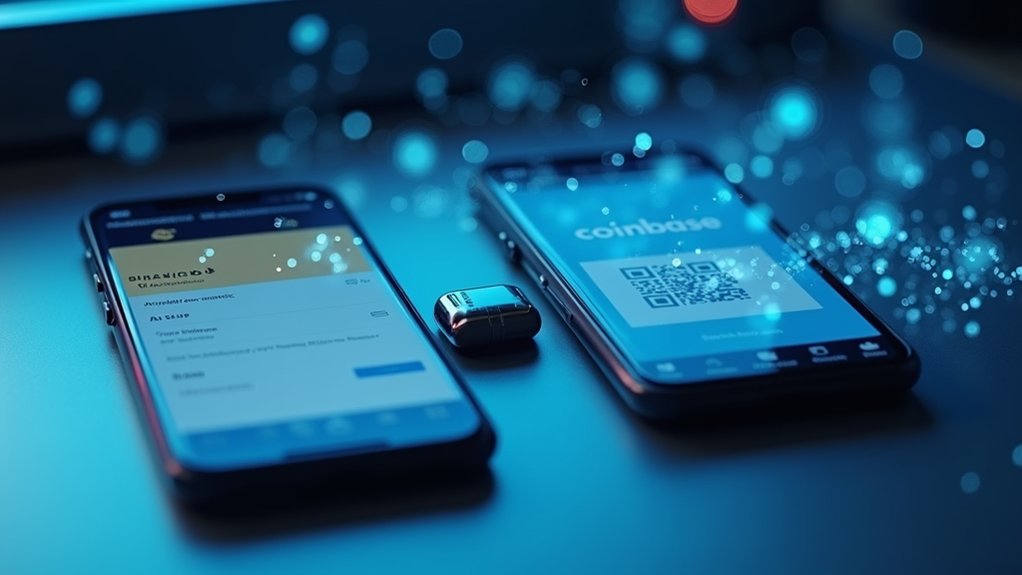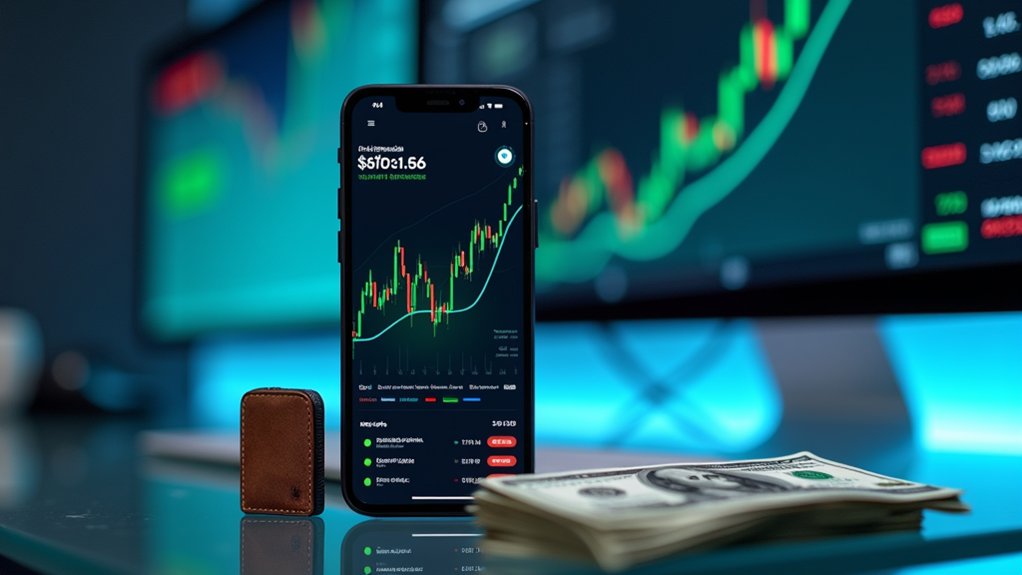Setting up a cryptocurrency wallet requires selecting a reputable application with cross-platform compatibility, implementing robust security protocols during account creation, and securely storing the generated seed phrase on physical media rather than digital storage. Users must understand that wallets manage private keys that prove ownership of blockchain assets, not the cryptocurrencies themselves. Receiving assets involves sharing a unique wallet address, either as an alphanumeric code or QR code. The thorough setup process guarantees secure access to the evolving digital financial ecosystem.

Establishing a functional cryptocurrency wallet requires careful consideration of security protocols and technical specifications to guarantee the protection of digital assets. The initial phase involves selecting an appropriate software application that provides compatibility across multiple devices, whereby users should prioritize applications that offer both desktop and mobile functionality, like Trust Wallet or Exodus, which enable seamless amalgamation between platforms while maintaining consistent security standards.
Robust wallet selection demands cross-platform compatibility to ensure secure digital asset management across all devices.
When acquiring the software, users must exercise due diligence by downloading exclusively from official websites or authorized application stores, since counterfeit applications with malicious code have been documented in numerous instances of cryptocurrency theft.
The account creation process necessitates implementing robust security measures through the establishment of complex passwords or biometric authentication methods, including facial recognition or fingerprint verification, depending on device capabilities. During this procedure, users should minimize personal information input to reduce potential data exposure in the event of security breaches, since cryptocurrency transactions are designed to operate with pseudonymity rather than requiring extensive personal identification. The entire setup process is relatively quick and takes few minutes to complete from start to finish. It's important to remember that wallets don't actually store cryptocurrencies but rather manage the private keys that prove ownership of digital assets on the blockchain.
Following account establishment, the wallet generates a seed phrase, consisting of either 12 or 24 words in a specific sequence, which functions as the essential recovery mechanism should access to the primary device be compromised or lost.
The secure storage of this seed phrase represents perhaps the most significant element of wallet configuration, since possession of these words grants complete access to associated digital assets regardless of device or location. Security experts recommend documenting this phrase on physical media, like paper or metal plates, stored in locations with controlled access, while explicitly avoiding digital storage methods that could be vulnerable to network intrusions. For maximum security of substantial cryptocurrency holdings, consider using hardware wallets that keep your assets offline and protected from internet-based threats.
Once security protocols are established, users can proceed to incorporate cryptocurrency into their new wallet by receiving transfers through their unique wallet address, which may be shared via alphanumeric code or QR code for scanning, or alternatively by connecting directly to cryptocurrency exchanges for streamlined purchasing and transfer capabilities, thereby completing the wallet setup process.
Frequently Asked Questions
How Do I Recover My Wallet if I Forget My Password?
Password recovery in cryptocurrency wallets depends on the wallet type and available recovery options.
For non-custodial wallets, users must utilize their seed phrase, typically a 12-24 word mnemonic sequence, to restore access.
Hardware wallets require initialization followed by seed phrase entry through dedicated software interfaces.
Custodial wallets typically offer conventional recovery methods like email verification.
Without a seed phrase or private key, funds may become permanently inaccessible, underscoring the critical importance of secure backup strategies.
Can I Have Multiple Cryptocurrencies in One Wallet?
Most modern cryptocurrency wallets support multiple cryptocurrencies within a single interface, allowing users to manage diverse digital assets simultaneously.
These multi-currency solutions, including platforms like Exodus and Trust Wallet, typically accommodate major cryptocurrencies like Bitcoin, Ethereum, and various altcoins.
While offering convenience through consolidated asset management, users should consider the security consequences of concentration risk, since a single compromised private key could potentially jeopardize multiple holdings, necessitating robust security practices.
What Fees Are Associated With Crypto Wallet Transactions?
Cryptocurrency wallet transactions incur several fee types, including network fees paid to miners or validators for processing transactions, which vary based on blockchain congestion and transaction complexity.
Exchange-related wallets typically charge trading commissions and withdrawal fees, while some custodial wallet services impose additional charges for enhanced features.
Fee optimization options include manual adjustments, utilizing layer-2 solutions, transacting during off-peak hours, and implementing transaction batching to reduce overall costs.
Are Hardware Wallets Better Than Software Wallets for Security?
Hardware wallets provide superior security compared to software alternatives, primarily due to their offline storage of private keys in tamper-resistant secure elements.
While software wallets remain connected to the internet, exposing them to malware, phishing, and hacking vulnerabilities, hardware devices isolate cryptographic operations offline.
This fundamental architecture difference guarantees private keys never leave the protected environment, substantially mitigating risks even when connected to compromised computers for transaction authorization.
How Do I Protect My Wallet From Hackers?
Protecting a wallet from hackers requires implementing multiple security layers, including hardware security modules for private key storage, enabling two-factor authentication via authenticator apps rather than SMS, and utilizing certificate pinning to prevent man-in-the-middle attacks.
Users should maintain regular software updates, avoid public Wi-Fi networks for transactions, store seed phrases offline, and employ multi-signature wallets requiring multiple keys, while consistently monitoring accounts for unauthorized activity.









